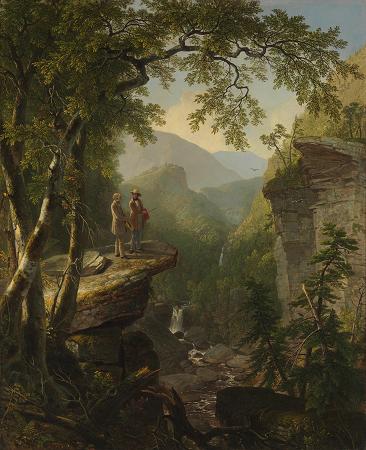Crystal Bridges Museum of American Art. Crystal Bridges Museum of American Art is a museum of American art in Bentonville, Arkansas. The museum, founded by Alice Walton and designed by Moshe Safdie, officially opened on 11 November 2011. It offers free public admission. Alice Walton, the daughter of Walmart founder Sam Walton, spearheaded the Walton Family Foundation's involvement in developing Crystal Bridges. The museum's glass-and-wood design by architect Moshe Safdie and engineer Buro Happold features a series of pavilions nestled around two creek-fed ponds and forest trails. The soil is flinty silt loam derived from chert and cherty limestone and is mapped as Noark-Bendavis complex. The 217,000 square feet complex includes galleries, several meeting and classroom spaces, a library, a sculpture garden, a museum store designed by architect Marlon Blackwell, a restaurant and coffee bar, named Eleven after the day the museum opened, 11/11/11. Crystal Bridges also features a gathering space that can accommodate up to 300 people. Additionally, there are outdoor areas for concerts and public events, as well as extensive nature trails. It employs approximately 300 people, and is within walking distance of downtown Bentonville. The museum has amassed $488 million in assets as of August 2008, an amount that will increase as more pieces are continually added to the museum's collection. It is the first major art museum to open in the United States since 1974. Over $317 million of the project's cost has been donated by Alice Walton. A 2013 Forbes ranking of the world's richest people placed the Wal-Mart heiress at No. 16, with an estimated net worth of $26.3 billion. In 2005, art historian John Wilmerding was hired for acquisition and advice on museum programming. Wilmerding commented that Alice Walton will not spend at any cost and will do her homework on almost every individual acquisition and will ask for paperwork on market comparables. He stated that often when an artwork became available through a private sale Walton would state 'Wait, it will come to auction where we can get it at a better price,' and she was usually correct. He also stated that the museum ranks at least in the top half dozen of American art museums. The museum's quality and its range and depth already place it among one of the very best. Headlines were generated after delays in construction and considerably higher costs for the museum than originally proposed to the city of Bentonville, Arkansas led to concerns about the favorable tax exemptions granted to the museum from the state in 2005 to secure its construction. Total tax losses to the state of Arkansas and the city of Bentonville are estimated at $17 million based on the financial disclosures given by the museum in the 2008 court case with Fisk University. The total amount of tax loss is estimated to have become considerably higher since then, but may never be disclosed due to the museum's guarded financial practices, including its decision not to disclose the amount spent since 2008 to secure collections, major art pieces, and lesser known works. However, the museum's IRS Form 990-PF notes acquisitions of $43.6 million during 2008, $81.9 million during 2007, $97.3 million in 2006. Through 2008, the total art acquisitions were at least $222.8 million. Don Bacigalupi was appointed director of the museum in August 2009. Previously, Robert G. Workman had served as director. In early May 2011, the museum announced three endowments by the Walton Family Foundation totaling $800 million. These endowments were established for operating expenses, acquisitions and capital improvements. The operating endowment, totaling $350 million, is being used to contribute to the museum's base annual operating expenses expected to total between $16-20 million per year. The acquisition endowment, totaling $325 million, will be used to fund additions to the museum's permanent collection. The remaining $125 million will be used as a capital improvement endowment to fund future improvements to and maintenance of the museum. In the past few years, Crystal Bridges has been in the news for numerous arrangements and partnerships with other art museums to share collections. In 2006, the museum partnered with the National Gallery of Art in an attempt to purchase Thomas Eakins' The Gross Clinic from Thomas Jefferson University. Under the terms of the agreement, the two museums agreed to pay a record $68 million, but the university gave Philadelphia 45 days to match the offer. The Philadelphia Museum of Art and Pennsylvania Academy of Fine Arts agreed to collectively match the offer and the painting remained in Philadelphia. The purchase forced both museums to sell some of their best Eakins pieces including Cowboy Singing and The Cello Player.
more...














